What is SPAM® Brand?
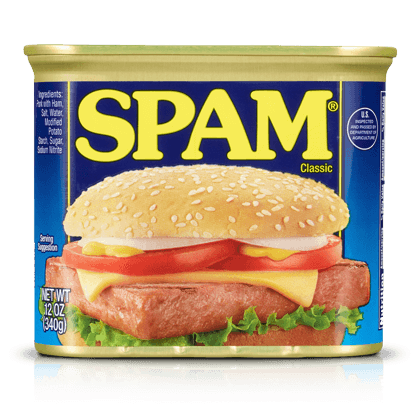
Six Simple Ingredients
Ah, the age-old question; what is the meat in that special can of SPAM® Classic? Many myths abound, but the answer is actually quite simple.
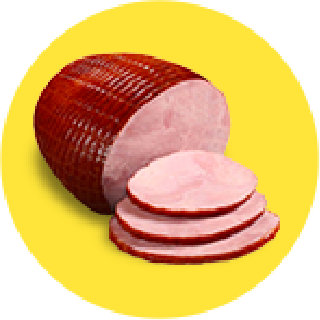
PORK WITH HAM

SALT

WATER

POTATO STARCH

SUGAR

SODIUM NITRITE
How It’s Made
At first glance, one might assume SPAM® products are produced through magic. But it’s actually a relatively simple, conventional process.
How It’s Made
At first glance, one might assume SPAM® products are produced through magic. But it’s actually a relatively simple, conventional process.
First, the pork and ham are pre-ground. Then, salt, sugar and the rest of the ingredients are added and mixed, to reach the desired temperature. From there, the mixture is moved over to the canning line, where it’s filled into the familiar metal cans, 12 ounces at a time.
Once filled, cans are conveyed to a closing machine where lids are applied through vacuum-sealing. Next, the cans are cooked and cooled for about three hours. At this point they’re nearly ready for enjoyment. But the cans can’t leave naked. Labels are applied and then they’re off to be cased, where they await distribution.
SPAM® Brand History
SPAM® Brand History
1937
1941
1947
1959
1962
1970
1971
1980
1986
1991
1992
1994
1995
1998
2000
2001
2004
2007
2012
2014
2015
2015
2016
2017
2017
2018
2019
2022
2023
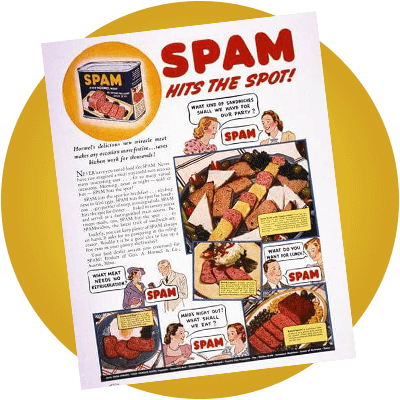
Hormel Foods introduces SPAM® luncheon meat. Ken Daigneau, brother of a Hormel Foods vice president, wins a contest–and $100–for naming the SPAM® brand.

More than 100 million pounds of SPAM® luncheon meat are shipped abroad to feed allied troops during WWII.
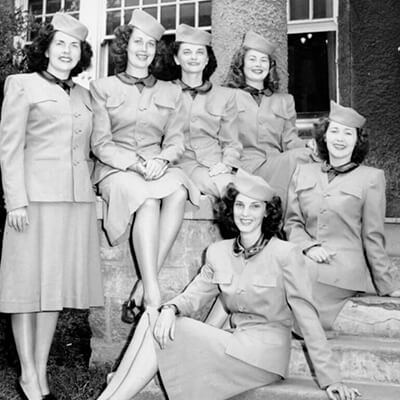
"The Hormel Girls," a 60 member performing troupe, toured cities across America to generate awareness for SPAM® Classic & other HORMEL® products.

The one-billionth can of SPAM® Classic produced.
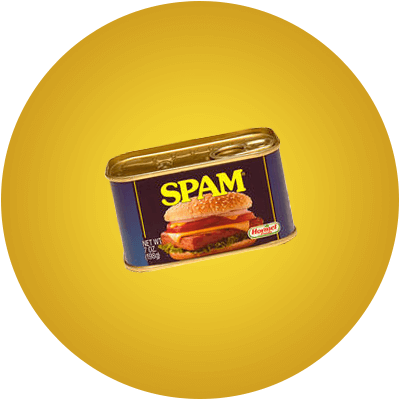
A 7-ounce size SPAM® Classic introduced.

The two-billionth can of SPAM® products produced. SPAM® Classic makes its TV debut in Monty Python's Flying Circus.

SPAM® Hickory Smoke Flavored and SPAM® with Cheese introduced.

The three-billionth can of SPAM® products produced.

SPAM® Less Sodium introduced.

The first SPAM® Museum opened at Oak Park Mall (Austin, Minn.) to celebrate the 100th anniversary of Hormel Foods.
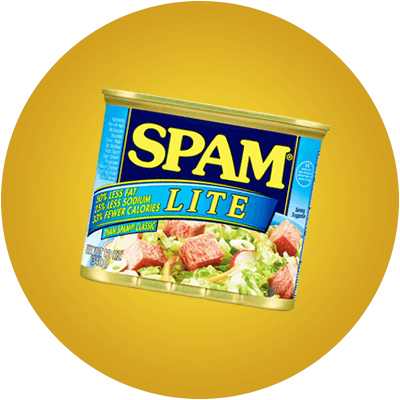
SPAM® Lite containing 25% less fat and 25% less sodium than SPAM® Classic introduced. The SPAMBURGER™ Hamburger is introduced via advertising campaigns.

The five-billionth can of SPAM® products produced.

Sponsored No. 9 SPAM® race car on NASCAR Winston Cup Series.

SPAM® brand packaging donated to the Smithsonian.

SPAM® Hot & Spicy introduced.
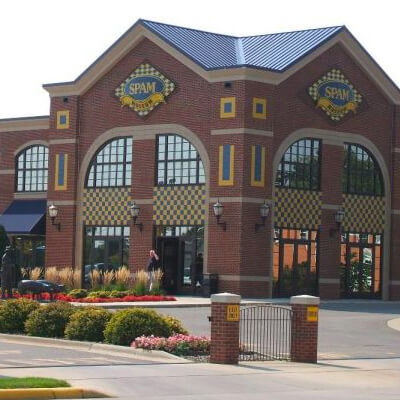
SPAM® Museum opens at the Hormel Foods Corporate Office (Austin, Minn.)

SPAM® with Real HORMEL® Bacon and SPAM® Single Classic introduced.

The seven-billionth can of SPAM® products produced.

SPAM® Teriyaki and SPAM® Jalapeño introduced. The eight-billionth can of SPAM® products produced. The SPAM® Family of Products celebrates its 75th anniversary. The SPAM® brand introduces the SIR-CAN-A-LOT® character, its first ever spokes-character.
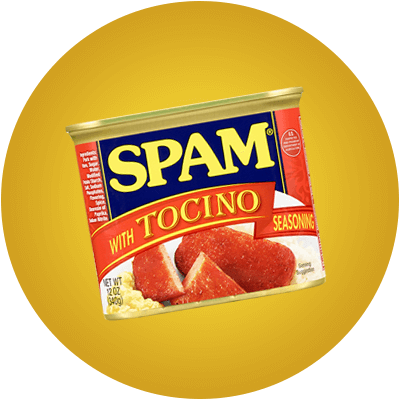
SPAM® with Tocino Seasoning introduced.
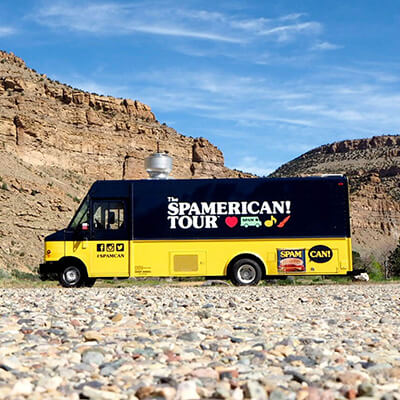
The SPAMERICAN!™ Tour set out across the country celebrating creative eats, beats and crafty treats.
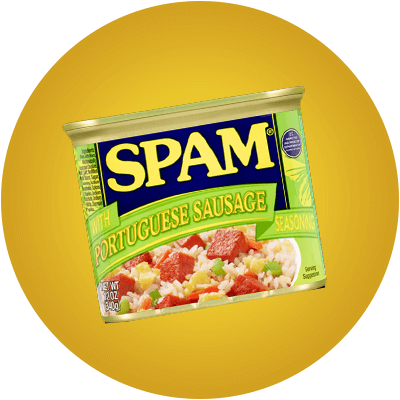
SPAM® with Portuguese Sausage Seasoning introduced.

The brand new SPAM® Museum opens in downtown Austin, Minn.

The first SPAM® brand-themed wedding was performed at the world-famous SPAM® Museum.

SPAM® brand turns 80.

SPAM® brand and Marcus Mariota at Radio Row during the Big Game.

Launch of SPAM® Pumpkin Spice.

Launch of SPAM® Figgy Pudding.

SPAM® Maple Flavored introduced.
Did You Know?
There are 12.8 cans of SPAM® products eaten every second.
There are 11 different varieties of SPAM® products.
SPAM® products are sold in 50 different countries around the world.
Over 9 billion cans of SPAM® products have been sold.
Big Ben in England is 1,163 SPAM® Brand cans tall.
The canjo is a banjo made using a SPAM® Brand can.
Guam residents consume an annual average of 16 cans per person.
Hawaii eats seven million cans of SPAM® products every year.
In Southeast Asia, SPAM® products are given as a luxury gift.
It would take 415,549,599 SPAM® Brand cans to circle the circumference of the Earth.
There is an entire Museum dedicated to the SPAM® Brand in Austin, MN.
SPAM JAM® Festival is Hawaii's largest festival every year.
SPAM® Brand starred on Broadway in Monty Python's SPAMALOT.
Over 100 million pounds of SPAM® product was shipped abroad to feed troops during WWII.